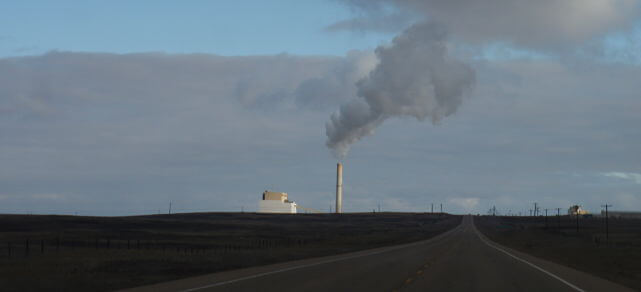Alberta’s petroleum riches are world-renowned. Its hydroelectricity potential, though, is a story that still surprises even the most seasoned energy observers.
Canada is the world’s third largest hydropower generator. Even at this scale, Canada could still more than double its current installed capacity. What many don’t realize is that Alberta also holds a massive undeveloped reserve of clean and renewable hydroelectricity, a resource that grows more economically attractive in a carbon-constrained world. With more than 11 gigawatts of technical potential, hydro generation conceivably could supply more than three-quarters of Alberta’s electricity needs.
Currently, the province’s generation system relies on fossil fuels, especially coal, and is the most greenhouse-gas intensive electricity system in Canada. Albertans, like all Canadians, are eager to minimize the environmental impact of their power consumption. Hydropower offers a proven way to reduce air pollution and carbon emissions while maintaining the reliability and efficiency of the grid.
The Alberta Electric System Operator (AESO) estimates demand for electricity in the province could grow by 2.7 per cent a year for the next 20 years. During this same period, about half of Alberta’s existing coal-fired generation could be retired based on federal regulations supporting efforts to reduce GHG emissions. The oil sands industry in particular is growing rapidly and will help drive a higher rate of electricity demand growth in the northern part of the province. Any way you look at it, Alberta is poised to build significant new electricity generation capacity.
There is no question that new renewables such as wind and solar can play a much bigger role, but it would be difficult to replace Alberta’s coal-fired generation with these sources alone. A reliable grid will require large base-load generation, which hydropower can provide.
Some observers point to natural gas generation as a fix to Alberta’s growing power needs, yet with roughly half the emissions of coal when consumed as a fuel for power generation, natural gas is not a long-term answer. Hydropower emissions, on the other hand, can be 25 times less than natural gas. On a full life-cycle basis, hydropower’s net GHG emissions are closer to zero than any other form of generation.
It is true that natural gas-fired generation can be built more quickly and at less upfront cost. The positive long-term payback for hydropower, however, is undeniable. British Columbia, Manitoba and Quebec generate more than 95 per cent of their electricity from hydro and they enjoy some of the lowest electricity rates in North America. The current life cycle of a natural gas facility is between 25 and 30 years while Canada has working hydro facilities that are more than 125 years old.
Hydropower does not consume water, unlike thermal electric generation such as nuclear and fossil fuel-powered plants, and the facilities are often multipurpose. That is, they can be used for flood control, irrigation, and other uses through water management planning. Properly developed, they can especially benefit Albertans who struggle with too much or too little water from season to season.
There are also important operational advantages that come with hydropower. It is the most dispatchable form of generation, meaning it can be turned on and off more quickly than any other source. This is extremely useful in levelling surges or imbalances in electricity supply and demand, which is especially valuable in supporting wind and solar, whose generation varies with weather and daylight conditions.
True, developing hydropower capacity requires patient capital; it can take time and resources to properly plan and construct facilities that can cost from millions to billions of dollars depending on size, location and the associated need for transmission lines. But as a hydro technology pioneer and leader, Canada’s landscape and history are full of examples where hydropower has paid off and continues to deliver considerable value to Canadians.
Given the abundance of coal and natural gas in Alberta, it is not surprising that for decades the province has been burning fossil fuels to generate electricity. But as Alberta moves toward a greener future, the technical, economic, environmental and multipurpose benefits of hydropower should better fit its growing and changing electricity needs.
It would make sense today for the province to think strategically about the long term, and what it needs to encourage wise energy use, achieve clean energy production and grow economic prosperity. With less than one-tenth of Alberta’s hydro potential developed, the province that is already an energy powerhouse can also become a leader in clean and renewable electricity, to be used at home or exported to other jurisdictions that also crave green power.
Jacob Irving is president of the Canadian Hydropower Association.







